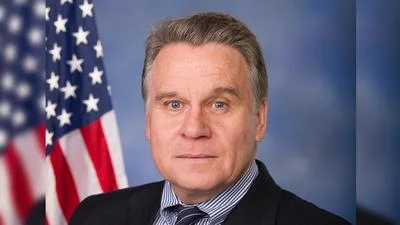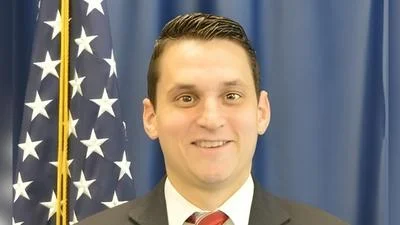The Congressional Record is a unique source of public documentation. It started in 1873, documenting nearly all the major and minor policies being discussed and debated.
“EARMARK DECLARATION” mentioning the U.S. Dept. of Energy was published in the Extensions of Remarks section on pages E1824-E1825 on July 16, 2009.
The publication is reproduced in full below:
EARMARK DECLARATION
______
HON. TIM MURPHY
of pennsylvania
in the house of representatives
Thursday, July 16, 2009
Mr. TIM MURPHY of Pennsylvania. Madam Speaker, pursuant to the Republican Leadership standards on earmarks, I am submitting the following information regarding earmarks I received as part of H.R. 3183, Energy and Water Development and Related Agencies Appropriations Act, 2010.
Request Number 1
Requesting Member: Congressman Tim Murphy
Bill Number: H.R. 3183, Energy and Water Development and Related Agencies Appropriations Act, 2010
Account: Department of Energy, EERE
Legal Name of Requesting Entity: Phipps Conservatory and Botanical Gardens
Address of Requesting Entity: 1059 Shady Avenue; Pittsburgh, PA 15232
Amount: $500,000
Description of Request: The CTI Waste to Energy System at the Phipps Conservatory will reduce the amount of waste directed to Western Pennsylvania landfills, create 10 jobs in the immediate area, and serve as a model for the future of waste management. This project is a concrete application of technology that addresses our nation's dependence on foreign-controlled fossil fuels and intelligently manages waste. This project will serve all Americans as part of the foundation for a data-driven discussion of energy and waste management policies.
I certify that this project does not have a direct and foreseeable effect on the pecuniary interests of me or my spouse.
Request Number 2
I took extreme care to ensure that these projects are well vetted and strongly supported within the community. The Canonsburg Lake, PA appropriation is of particular interest to my district and importance to my constituents.
Requesting Member: Congressman Tim Murphy
Bill Number: H.R. 3183, Energy and Water Development and Related Agencies Appropriations Act, 2010
Account: Corps of Engineers, Section 206
Legal Name of Requesting Entity: U.S. Army Corps of Engineers, Pittsburgh
Address of Requesting Entity: 100 Liberty Avenue, Room 1828; Pittsburgh, PA 15222
Description of Request: This project will implement a Corps of Engineers Section 206 Aquatic Restoration Feasibility Study. Restoring the aquatic ecosystem of the lake that has been severely degraded by sediment deposition. Dredging the sediment from the lake is proposed to enhance the ecosystem for fish species and other aquatic life, restore adequate water levels and create additional wetlands on site.
I certify that this project does not have a direct and foreseeable effect on the pecuniary interests of me or my spouse.
Request Number 3
I took extreme care to ensure that these projects are well vetted and strongly supported within the community. The Locks And Dams 2, 3 And 4 Monongahela River Appropriations is of particular interest to my district and importance to my constituents.
Requesting Member: Congressman Tim Murphy
Bill Number: H.R. 3183, Energy and Water Development and Related Agencies Appropriations Act, 2010
Account: Corps of Engineers, Construction
Legal Name of Requesting Entity: U.S. Army Corps of Engineers, Pittsburgh
Address of Requesting Entity: 100 Liberty Avenue, Room 1828; Pittsburgh, PA 15222
Amount: $6,210,000
Description of Request: The Lower Monongahela River Project is located in Southwestern Pennsylvania and was authorized for construction by the Water Resources Development Act (WRDA) of 1992. This project addresses the deteriorated condition of the navigation facilities along the Lower Monongahela River. The project is to build a new dam at 2 (Braddock), new locks at 4 (Charleroi) and then to remove the Locks and Dam at 3 (Elizabeth), creating a single 30 mile pool. The dam at 2 is now complete but the old dam 3 cannot be removed until the locks are completed at 4. Specific concerns were the very real risks of navigation system failure related to the poor structural condition of Locks & Dam 3, and the fact that industry must continue to rely on a single chamber at Locks 4 on the Monongahela River. Ground was broken in 1994 and the project was to be completed in 2004 or in 10 years. However, the slow pace of funding forced inefficient decisions, which now mean the best schedule for total project completion, now 2016, provided that the project continues to receive optimal funding. The funding delays created greater than normal maintenance problems. The condition and sustained operability of Locks and Dam 3, and Locks 4 is a significant and growing concern. The 100-year-old Locks and Dam 3 are among the oldest structures operating on the inland navigation system, and the most structurally deficient navigation facility on the Monongahela River. The larger locks will afford industry a 27 percent savings in economy scale. The challenge is to put the Lower Monongahela River Project on an efficient funding schedule.
I certify that this project does not have a direct and foreseeable effect on the pecuniary interests of me or my spouse.
Request Number 4
I took extreme care to ensure that these projects are well vetted and strongly supported within the community. The Upper Ohio Navigation System Study, PA Appropriations is of particular interest to my district and importance to my constituents.
Requesting Member: Congressman Tim Murphy
Bill Number: H.R. 3183, Energy and Water Development and Related Agencies Appropriations Act, 2010
Account: Corps of Engineers, Investigations
Legal Name of Requesting Entity: U.S. Army Corps of Engineers, Pittsburgh
Address of Requesting Entity: 100 Liberty Avenue, Room 1828; Pittsburgh, PA 15222
Amount $1,250,000
Description of Request: The Upper Ohio River, defined as Emsworth, Dashields, and Montgomery (EDM) Locks and Dams, is a multi-year feasibility investigation to determine the best navigation improvement project. EDM are the three oldest locks on the Ohio River navigation system. Two major problems associated with the locks are: (1) their structural condition; and (2) the lock chamber sizes are too small to efficiently accommodate modern tow configurations.
I certify that this project does not have a direct and foreseeable effect on the pecuniary interests of me or my spouse.
____________________








